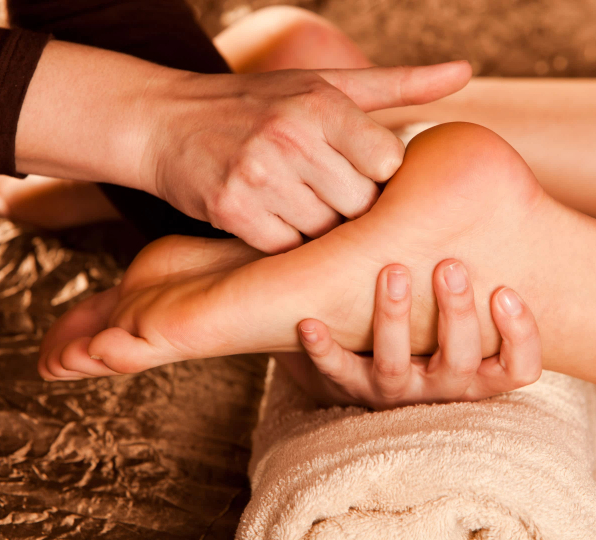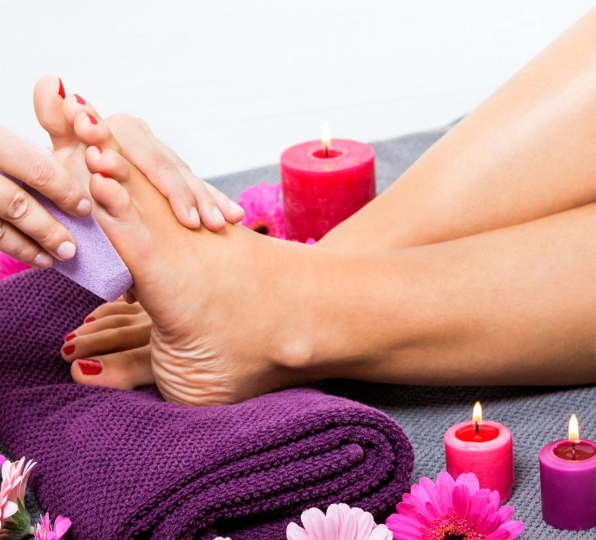Introduction:
Reflexology is a centuries-old technique that involves pressing on certain points on the hands, feet, or ears in order to encourage relaxation and healing all over the body. Reflexology is based on the deep-seated theory that these reflex points correspond to various organs and systems, and that stimulating them can have significant effects on general health and well-being, despite the fact that it may appear to be just a basic foot massage. Let’s explore the history, tenets, and advantages of reflexology.
1. Origins and History
Reflexology originated as a natural healing technique thousands of years ago in ancient civilizations like Egypt, China, and India. The work of pioneers like Dr. William Fitzgerald and Eunice Ingham in the early 20th century led to the development of reflexology as a modern practice. Since then, reflexology has become more well-known all over the world as a kind and non-invasive adjunctive therapy.
2.Principles of Reflexology
Reflexology operates on the principle that the body is interconnected, and stimulating specific reflex points can facilitate the flow of energy (Qi or Prana) and promote balance and harmony within the body. These reflex points correspond to different organs, glands, and body systems, mapped out on the feet, hands, and ears. By applying pressure to these points, reflexologists aim to stimulate the body’s natural healing mechanisms and alleviate imbalances and blockages.
3.How Reflexology Works
During a reflexology session, a trained practitioner applies firm pressure to specific points on the feet, hands, or ears using their thumbs, fingers, or specialized tools. This pressure stimulates nerve endings, which send signals to the brain and spinal cord, activating the body’s relaxation response. Reflexology also promotes circulation, enhances lymphatic drainage, and releases tension in the corresponding organs and tissues.
4.Benefits of Reflexology
- Stress Reduction: Reflexology induces a state of deep relaxation, helping to reduce stress, anxiety, and tension. This relaxation response triggers the body’s natural healing processes, promoting overall well-being.
- Pain Relief: Reflexology can alleviate various types of pain, including headaches, back pain, menstrual cramps, and musculoskeletal discomfort, by targeting reflex points associated with pain relief and relaxation.
- Improved Circulation: By stimulating blood flow and lymphatic drainage, reflexology enhances circulation throughout the body, delivering oxygen and nutrients to cells and removing toxins and metabolic waste products.
- Enhanced Sleep Quality: Reflexology has been shown to promote better sleep by reducing insomnia, enhancing relaxation, and regulating the body’s sleep-wake cycle.
- Boosted Immune Function: Reflexology strengthens the immune system by reducing stress, improving circulation, and supporting the body’s natural healing processes, thereby enhancing resilience against illness and disease.
5.Who Can Benefit from Reflexology
Reflexology is safe and suitable for people of all ages, from infants to the elderly. It can complement conventional medical treatments and promote holistic well-being for individuals experiencing various health conditions or simply seeking relaxation and stress relief. Pregnant women, in particular, may find reflexology beneficial for alleviating pregnancy-related discomfort and promoting a sense of balance and harmony.


Conclusion:
Reflexology offers a gentle yet powerful approach to promoting health and wellness by stimulating specific reflex points on the feet, hands, and ears. Whether you’re seeking stress relief, pain management, improved circulation, better sleep, or enhanced immune function, reflexology can provide holistic benefits for body, mind, and spirit. Consider incorporating this ancient healing art into your self-care routine and experience the transformative effects of reflexology on your well-being.












